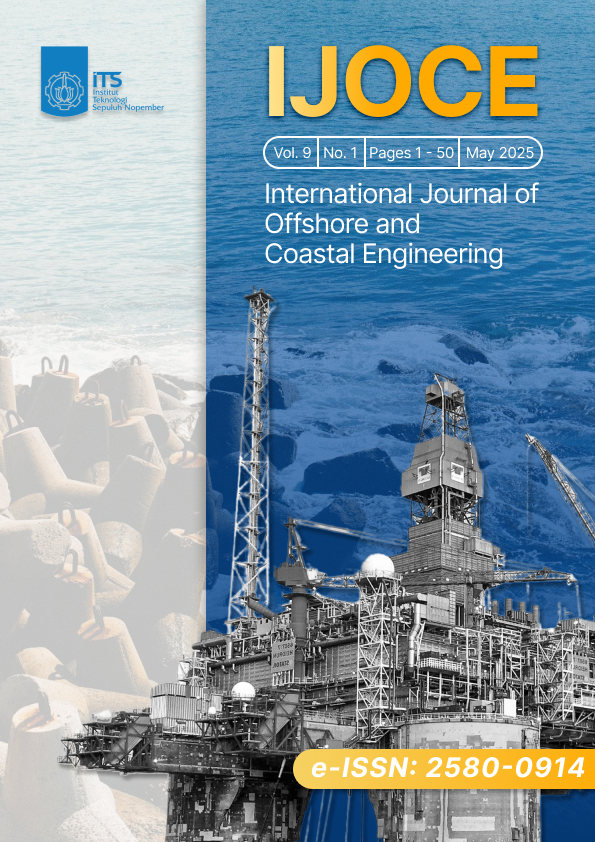Analysis of Abrasive Materials dan Air Pressure Variations for Thermal Spray Aluminum Coating on Adhesion Strength and Corrosion Resistance in Seawater Environment
DOI:
https://doi.org/10.12962//j225800914.v9i1.4467Keywords:
Abresive Material, Adhesion, Air Prassure, Corrosion, Thermal Spray Aluminum CoatingAbstract
Marine structures must withstand the marine environment for a
certain design life. However, corrosion causes a decrease in
structural integrity before reaching the design life. Thermal spray
aluminum coating becomes a protection method because of its
resistance to corrosion in the long term. This study analyzed the
effect of variations in abrasive materials and air pressure on
thermal spray aluminum coating on ASTM A36 steel. The steel
material will be blasted with two types of abrasive materials,
namely garnet and aluminum oxide, then coated using the electric
arc wire spray method at pressures of 2.5 bar, 3.5 bar, and 4.5 bar.
Testing was carried out using the pull-off adhesion test and the
three-electrode cell method. The results showed that the highest
adhesion strength of 12.2 MPa occurred at 4.5 bar aluminum
oxide, while the lowest was 6.3 MPa at 2.5 bar garnet. The lowest
corrosion rate of 0.001 mm/year was obtained at 4.5 bar garnet,
and the highest was 0.101 mm/year at 2.5 bar aluminum oxide.
Based on the results of the corrosion rate test, it can be concluded
that the increase in pressure is directly proportional to the increase
in coating performance in resisting corrosion. Conversely, the
increase in surface roughness is inversely proportional to the
coating performance in resisting corrosion.
Downloads
Downloads
Published
How to Cite
Issue
Section
License
Copyright (c) 2025 International Journal of Offshore and Coastal Engineering (IJOCE)

This work is licensed under a Creative Commons Attribution 4.0 International License.








